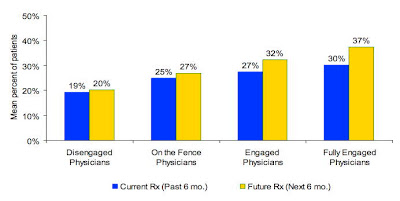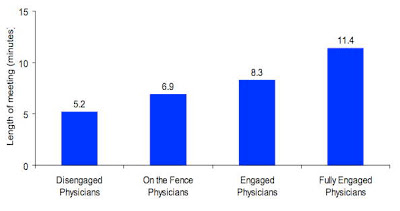Did you know that the average pharmaceutical sales rep earned $94,200 in total compensation in 2007, compared with $87,500 in 2006? This was an estimate made by the National Association of Pharmaceutical Sales Representatives (NAPSRx; see “PHARMACEUTICAL SALES COMPENSATION OUTLOOK FOR 2008“).
And, according to NAPSRx, the average pharma sales rep is working LESS for that increased income! According to NAPSRx, sales reps are now expected to make 8 calls a day, down from nine, “which is surprising,” says NAPSRx.
NAPSRx has an explanation: “This change probably means that pharmaceutical companies are being more realistic in their expectations as they are emphasizing the need for quality interaction with physicians.”
I give ’em kudos for being able to use “realistic” and “pharmaceutical companies” in the same sentence. More important than reality, however, is this focus on “quality interactions with physicians” and what that really means.
Of course, the drug industry would like to define a quality interaction as one that provides the physician with the most value. But what do physicians consider valuable about their relationships with pharmaceutical sales reps?
PeopleMetrics, a marketing research firm, thinks it has the answer to that question: friendship!
In April 2008, PeopleMetrics Rx fielded a national self-funded study of 239 PCPs (Primary Care Physicians) and 235 psychiatrists. What they measured was “Physician Engagement” using the “REAP” Model consisting of 4 survey questions:
- Retention: Given the choice, I would keep my sales representative as the representative who is assigned to my practice
- Extra Effort: I would go out of my way to meet with my sales representative
- Advocacy: I would recommend that my colleagues meet with my sales representative
- Passion: I enjoy meeting with my sales representative
It turns out — surprise, surprise — that these “emotional” determinants of physician engagement (as opposed to functional determinants like the quality of the product and clinical information delivered, the reputation of the company that markets it, and how the rep can help the physician improve the quality of patient care) are “the most impactful drivers of physicians’ prescribing behaviors.”
Here are the charts to prove it (click on images for an enlarged view):
 Physicians with higher levels of engagement are inclined to prescribe more than those who are disengaged.
Physicians with higher levels of engagement are inclined to prescribe more than those who are disengaged. Fully Engaged physicians spend more than twice as long speaking with their reps on a per-visit basis and meet with them twice as frequently compared to their disengaged counterparts (the latter takeaway is not charted here.)
Fully Engaged physicians spend more than twice as long speaking with their reps on a per-visit basis and meet with them twice as frequently compared to their disengaged counterparts (the latter takeaway is not charted here.)
Ergo, the “friendlier” the rep, the more the doctor will prescribe the product being detailed by the rep. The more prescriptions, the greater the rep’s bonus! Of course, spending more time with each physician means that “friendlier” reps see fewer physicians overall.
Forget the technology. Forget the delivery of the message. The key to sales force effectiveness is charm. Good looks also helps.
BTW, now that the kibosh has been placed on tchotches — free gifts to physicians — ugly, unfriendly pharma sales reps are at a distinct disadvantage. This means that the pharmaceutical industry will be forced to hire even more cheerleaders as sales reps!
For more information about the PeopleMetrics Rx Physician Engagement research, please contact: Gary White, Executive Vice President, PeopleMetrics Rx at: 215.979.8036 or via email: gwhite@pm-rx.com.
DISCLAIMER: I was NOT paid by PeopleMetrics or anyone else write this post!








![6 Digital Tools at the Center of Healthcare Digitalization [INFOGRAPHIC]](http://ec2-54-175-84-28.compute-1.amazonaws.com/pharma-mkting.com/wp-content/uploads/2021/04/6DigitalTools_600px-100x70.jpg)




